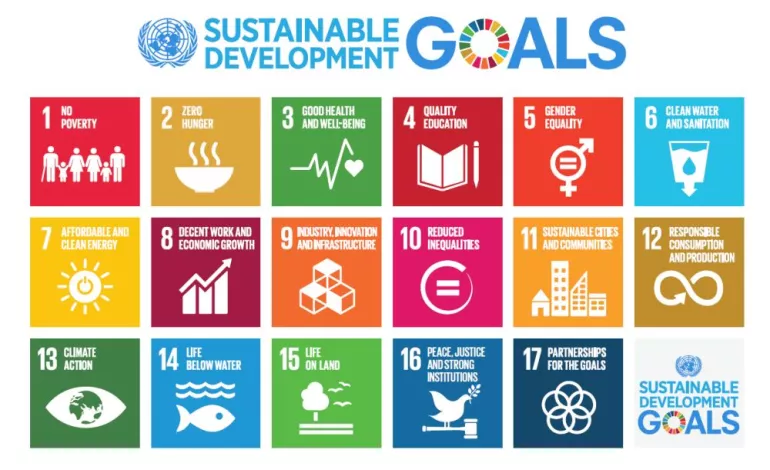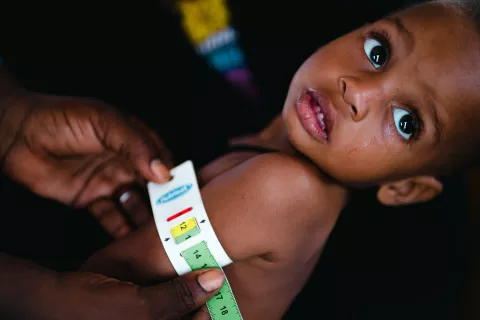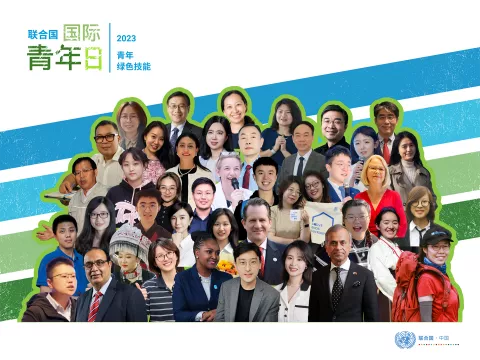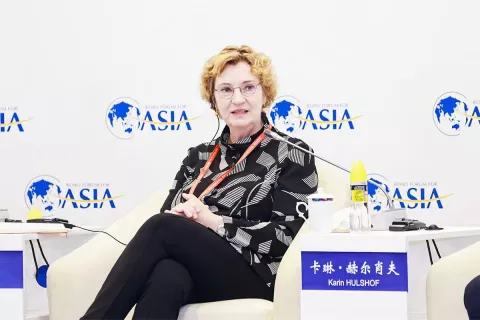Children and the Post-2015 Development Agenda

- Available in:
- 中文
- English
Goal 1: End poverty in all its forms everywhere.
Goal 2: End hunger, achieve food security and improved nutrition and promote sustainable agriculture.
Goal 3: Ensure healthy lives and promote well-being for all at all ages.
Goal 4: Ensure inclusive and equitable quality education and promote lifelong learning opportunities for all.
Goal 5: Achieve gender equality and empower all women and girls.
Goal 6: Ensure availability and sustainable management of water and sanitation for all.
Goal 7: Ensure access to affordable, reliable, sustainable and clean energy for all.
Goal 8: Promote sustained, inclusive and sustainable economic growth, full and productive employment and decent work for all.
Goal 9: Build resilient infrastructure, promote inclusive and sustainable industrialization and foster innovation.
Goal 10: Reduce inequality within and among countries.
Goal 11: Make cities and human settlements inclusive, safe, resilient and sustainable.
Goal 12: Ensure sustainable consumption and production patterns.
Goal 13: Take urgent action to combat climate change and its impacts.
Goal 14: Conserve and sustainably use the oceans, seas and marine resources for sustainable development.
Goal 15: Protect, restore and promote sustainable use of terrestrial ecosystems, sustainably manage forests, combat desertification, and halt and reverse land degradation and halt biodiversity loss.
Goal 16: Promote peaceful and inclusive societies for sustainable development, provide access to justice for all and build effective, accountable and inclusive institutions at all levels.
Goal 17: Strengthen the means of implementation and revitalize the global partnership for sustainable development.
Today's children are growing up in an era of unprecedented global interconnection and innovation. Many millions enjoy a quality of life never imagined by previous generations. Out of the spotlight, many others have been left behind by the rapid development of the past 15 years. Whether they have benefited from or missed out on recent global transformations, all children must grapple with economic shocks and new threats to health, environment, security and political stability that have arisen as the world has changed.
Children held back by poverty, sickness, violence and abuse, lack of an education, armed conflict or natural disasters, are denied a fair chance in life. Deprivation and unequal opportunity prevent them from achieving their goals and taking full part in the life of their communities and the world.
This year, nations enter a new phase of development underpinned by the Sustainable Development Goals (SDGs). This new agenda presents a historic opportunity to advance the rights and well-being of every child, especially the most disadvantaged, and secure a healthy planet for today's children and future generations.
UNICEF welcomes this ambitious and universal ‘plan of action for people, planet and prosperity', and commits to do all it can to achieve the goals. The organization will work in partnership with governments, civil society, business, academia and the United Nations family – and especially children and young people – to scale up what works, innovate for improved solutions and results, measure progress and share lessons learned.
There can be no sustainable development, prosperity or peace without equity – a fair chance for every child. If the most disadvantaged children do not share in progress, it will not be sustained.
The new agenda has the potential to set global development on a more equitable path. It offers a chance to provide all children with the tools, skills and services they need to survive, thrive and make the most of their lives – no matter the circumstances of their birth.
Progress towards achieving the goals will be judged by whether interventions reduce inequality and reach the most vulnerable children and communities. Robust and disaggregated data play a crucial role in identifying and reaching children on the margins of society.
Children and young people need a space to engage with the decision-makers who will put the SDGs into practice. Young people can help to change their own lives and their communities – they have ideas, boundless energy for action, and the greatest stake in the future. Empowered by knowledge and awareness of their rights and the world's urgent needs, they can press people in power to live up to the commitments they have made.
The SDGs consist of 17 goals and 169 targets. Not all of them reference children, but all are relevant to children's lives. Taken together, the goals amount to a holistic approach to meeting children's needs, protecting them from harm and securing their environments.
Actions taken to safeguard oceans and ecosystems, create sustainable cities, invest in energy and infrastructure, bolster institutions and forge partnerships will shape children's lives and the world. So that children may inherit a healthier planet, the SDGs call for integrating climate change policies into national strategies and plans and ensuring access to affordable, reliable and modern energy services for all by 2030.
Many of the new goals address the most imminent dangers children face today. Violence threatens the lives and futures of millions of children and shreds the social fabric of communities and nations. Elevating protection against violence – including abuse, exploitation and trafficking – on the international agenda is one of the great achievements of the SDGs.
Some goals speak directly to the things without which children cannot survive, thrive and make the most of their potential – food, health care, clean water, education and job prospects. The goal on nutrition calls for an end to malnutrition, which threatens children's lives and undermines their health and physical growth, education and futures.
The goal on health addresses the risks children face throughout their life cycle, from under-five mortality to noncommunicable diseases. The focus on social determinants – and the need to strengthen health systems and social safety nets – speaks to the factors that affect the health of the most disadvantaged.
The goal on water and sanitation continues unfinished development business, aiming for universal and equitable access, with special attention to the needs of women and girls and vulnerable people.
Many children do not attend school, while many others spend years in the classroom failing to learn even basic skills. The goal on education addresses access to learning opportunities and the quality of schooling. It adds early childhood learning to the agenda – a development milestone – and aims to ensure that education is accessible to all children, whether girl, boy, disabled, indigenous or living in a vulnerable situation.
The goal on economic growth and employment calls for a global strategy to ensure work opportunities for young people. It also aims to end child labour, starting with its hazardous forms, including recruitment and use of child soldiers – a critical addition to the global development agenda.
The goals take on poverty, inequality and gender discrimination, all of which harm children and thwart their potential. The goal on poverty recognizes the universal scope and many dimensions of the problem and urges countries to develop and strengthen social protection systems.
Acknowledging that the poorest children are not getting a fair chance and that discrimination based on factors like ethnicity or geographic location can reinforce poverty across generations, the goal on inequality calls on countries to enact policies that narrow the gaps between rich and poor, and to dismantle ones that exclude groups of children from societies, politics and economies.
Because many girls still face discrimination, the goal on gender equality provides strong targets on empowerment, discrimination and ending practices such as child marriage and female genital mutilation/cutting. With the new global goals in place, it will take commitment and resolve to provide a fair chance in life for every child. The stakes are high. How we decide to invest in children and how we engage them in building the future will ultimately determine whether we are successful in creating a more peaceful, prosperous and sustainable world.
UNICEF has developed a set of "two pagers" on key issues for children that should be included in the Post-2015 Development Agenda. Each brief contains some rationale text, suggested target(s) and a data snapshot on the issue.
Monitoring, Follow Up and Review of the SDGs [Chinese]
Priority Indicators for Children [Chinese]
Media contacts
About UNICEF
UNICEF works in some of the world's toughest places, to reach the world's most disadvantaged children. Across 190 countries and territories, we work for every child, everywhere, to build a better world for everyone. For more information about UNICEF and its work for children visit www.unicef.org.
| Visit UNICEF China website: www.unicef.cn Follow us on Sina Weibo: http://weibo.com/unicefchina Tencent Weibo: http://t.qq.com/unicef Wechat: unicefchina |




